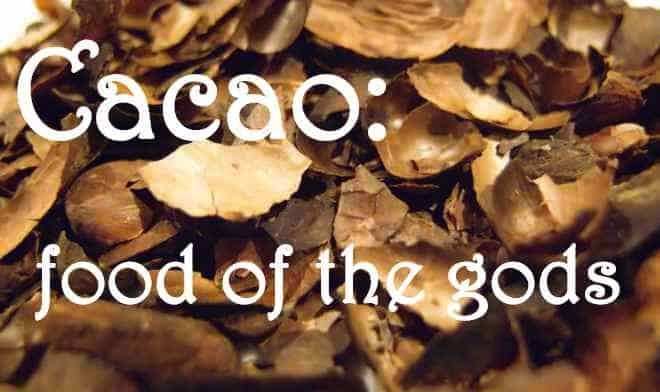The cacao tree has been an important part of our lives since the Olmecs began drinking a mixture of crushed cacao beans, water, and spices. Fermented cacao beans may have also been used to create an alcoholic beverage in Honduras around the same time period. For thousands of years, cacao was mostly reserved for the wealthy in its liquid form. Cacao beans also became a means of currency in the Mayan and Aztec eras. Cacao beans were bartered for food, supplies, services, and taxes.
It was not until the two centuries ago that the cacao bean was used to produce one of the most popular products of cacao, solid chocolate; a mixture of crushed cacao beans, cacao butter, sugar, and other flavors. Throughout cacao’s industrialization the cacao tree became accessible to the masses and was not just for the upper class anymore.
While theobromo cacao is best known for chocolate production, cacao beans are also known to contain many vitamins and minerals. Compounds such as theobromide and anandamide are also found in cacao, generally making bad days feel like better days after consumption. Cacao can also be a source of caffeine and antioxidants.
Much of today’s cacao trees are grown and harvested in Africa. Cacao trees, however, are believed to have originated from the Amazon and equatorial regions of Central and South America. With the Spanish discovery of the cacao tree and the European domestication of cacao products, the cacao trees were exported initially to Europe and eventually made their way to Africa. While Africa grows the most cacao trees for commercial production, they continue to grow in Central and South American regions and have been introduced to regions in Southeast Asia.
Worldwide, chocolate has become a multi-billion dollar industry. With the addition of sugar and other flavors, chocolate can be produced rather inexpensively. Historically and unfortunately, to this day, cacao has been and is produced by “slavery, forced labor, and hazardous child labor” (Harvard Gazette, March 2013). Sugar production can also be traced back to slavery. For the love of chocolate, it is easy to unwrap a piece and wallow in a joyous moment as the chocolate melts in our mouths. It is much harder to imagine that the main ingredients in chocolate (cacao and sugar) could have been harvested and produced by people who are not paid appropriately to do so.
In addition to promoting the payment of fair wages, it is important to protect the environment in which cacao trees grow. Without proper farming practices, the current land will become unusable by not only cacao farmers, but also the animal and plant life that surrounds the property. Inappropriate farming practices can lead to water pollution, adverse soil health, and the inability for other native plants and animals to survive.
In recent years, there have been noticeable changes to making consumers aware of these issues in addition to holding manufacturers accountable for ethical practices. However, to preserve the food of the gods we must continue to ensure their sustainability, and advocate for fair farming and ecologically sound harvesting techniques.
To consume chocolate like a god, try brewing Mayan cacao tea, or xocoatl.
Ingredients:
2 Tbsp. Roasted husks of cacao beans, if available – otherwise purchase loose leaf cacao tea
8 oz Boiled Water
Pinch of preferred Spices (e.g. pepper, cinnamon, cayenne pepper)
Honey (or sweetener), for desired sweetness
Directions:
Steep husks and preferred spices in boiled water for 3 – 5 minutes. Add desired amount of sweetness (honey or other sweetener).













